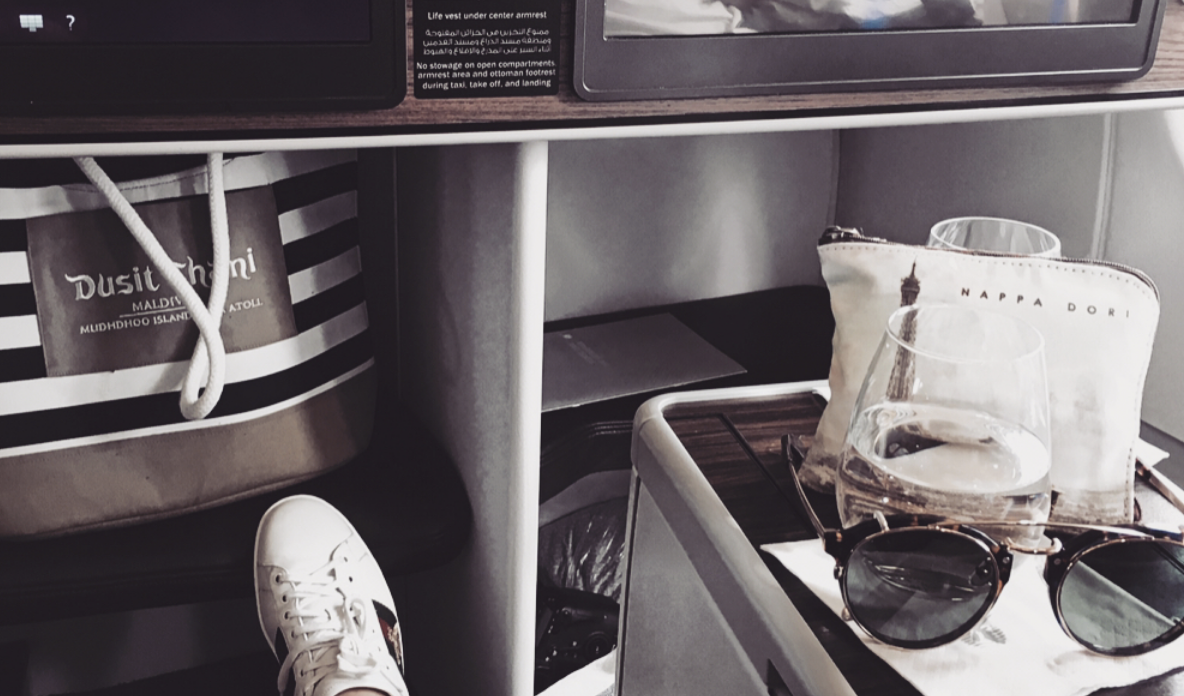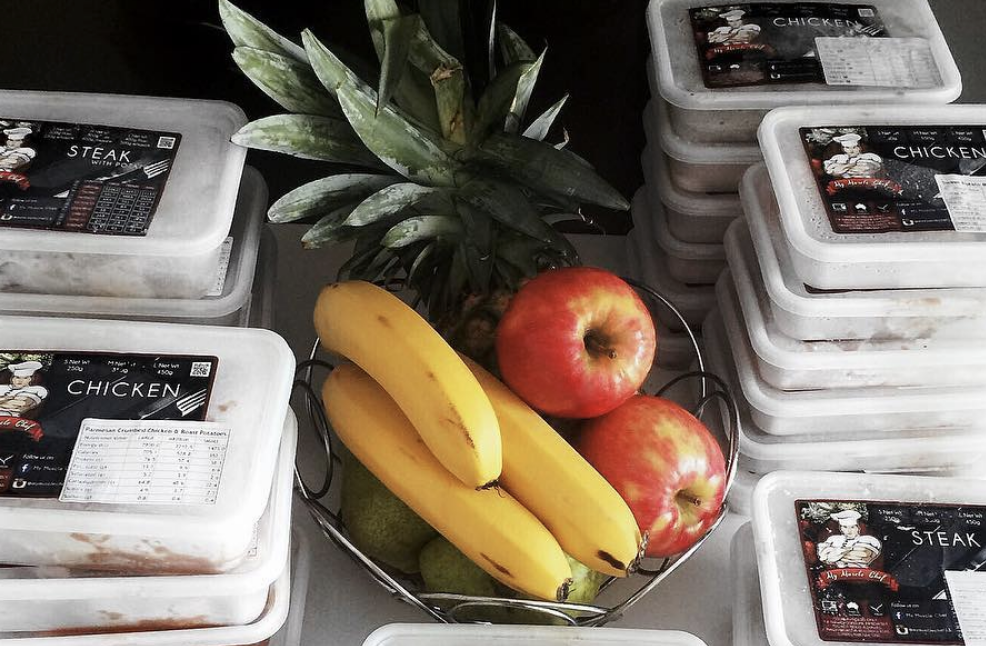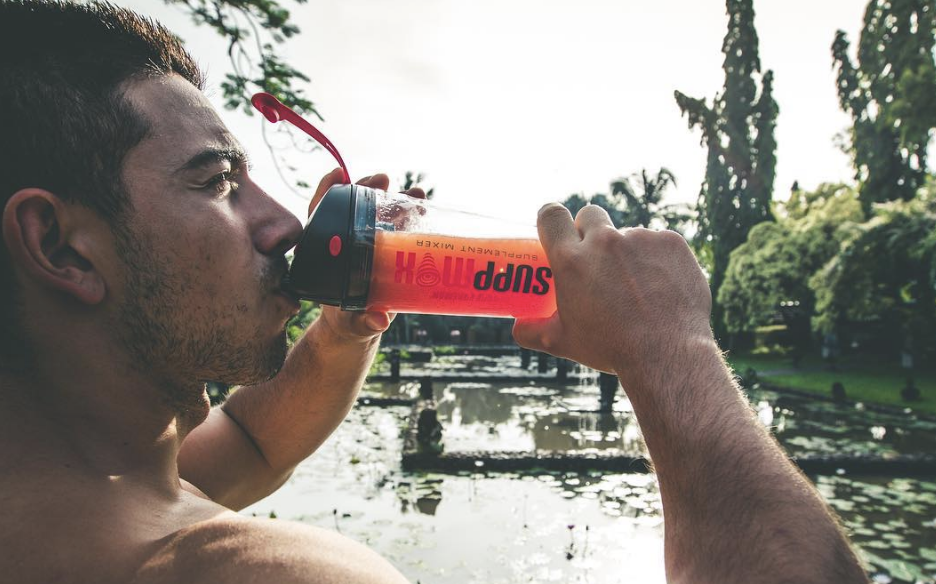Everything

Long haul flights can have a negative impact on health and fitness habits. Especially if you need to fly frequently because your job or business depends on it. The uncomfortable seats with limited legroom, scalp drying air conditioning and bugs that lurk around in that single toilet shared by fifty people can all throw your trip off balance, before it has even properly started.
If nothing else, it’s the missed sleep and trying to adjust to the new time zone which makes your fitness training a ghost of it’s past. But also affects how much you get out of the first few days after the arrival. No matter how exotic the location is, it takes time until you feel 100 percent again.
The best defence against the negatives of flying is an attack by proper preparation and having a clear plan to follow. Here are some things to try the next time you take off to make sure you don’t spend the first two days dazed and confused.
Pay extra for the emergency aisle seat
This holds true for those of you who find the economy class on most carriers just a bit too tight with legroom. If you are about to embark on a long flight it is well worth to fork out the extra cash. You can stretch the legs out instead of sitting the 5+ hours with your knees in your mouth.
You are more likely to get some important sleep too and can get more out of the initial day or two at your destination. Worth every cent especially if you are only in for a brief visit or have a vital business meeting briefly after landing.
Of course, there is always the option to fly business or first class, if you can afford it.
Bring your own snacks
Let’s face it, unless you fly business or first class, the airplane food is less than average, both in flavour and in quality. There are exceptions, but they are far and few between. By bringing some nuts, apples, muesli bars, protein bars or “superfood” bars with you can solve this issue. You can arrive with your gut feeling better, and not spend the first day organising your activities based on the location of the nearest bathroom.
Bring a neck pillow, sleep mask and earplugs
If you are sleep deprived you are more likely to snack and overeat. Simple as that.
Neck pillow allows you to find the most comfortable sleeping position, even when flying in the economy class. And instead of worrying about how much noise the person three aisles up is making, or getting annoyed about the voracious reader sitting next to you, having an eye mask and earplugs mean that you can ignore the distractions around you.
Wear flight socks
Socks can reduce the swelling of the feet, making the flying experience less annoying. Properly fitted flight socks can also help preventing deep vein thrombosis.
As mentioned on Qantas website:
“Compression stockings can assist in preventing swelling of the ankles and feet and they may improve the blood return to the body from the lower legs. You may like to talk to your doctor about this. The stockings may be purchased from medical and surgical supply companies and will need to be individually fitted to your leg measurements.”
Set your clocks and eat according to the destination time zone
As soon as you’ve found your seat wind the clocks to the destination time and make yourself slave to that time. This helps you to get adjusted to the time quicker compared to living on an airplane-, or departure time the whole trip.
Body’s natural circadian rhythm is tuned to light, as well as food. You are covered for the light since you brought the eyemask. Set your gut in the same time zone by only eating at times you would at the final destination.
If you take off in the morning but at your destination it’s midnight skip breakfast served on the plane after take-off. Wait until it’s breakfast time at your destination. Either ask the staff to put a meal on the side for you or have your snacks with you.
Use Humidifier, sinus spray and/or vaseline
Airplane air, although cleaner than an average office air, is extremely dry. This can cause sinus issues affecting your sleep on the plane and when arriving to your destination. Flying with a humidifier, although not the most appealing in it’s looks, can help you to cope with the dryness by keeping the sinuses moist.
The other issue with dryness is that it opens a pathway for germs circulating in the air, even if the air is relatively clean. By putting a bit of paw paw or vaseline up your nostrils will help you to keep them moist. Therefore keeping the germs at bay. Apparently a trick used by many of the airplane staff. Just remember, a little goes a long way.
Drink water, avoid alcohol and caffeine
Flying is a body-drying experience in itself. And overdoing alcohol and caffeine, both of which are diuretics, only make you more dehydrated. Due to the lower pressure of airplane cabin your body’s ability to absorb oxygen decreases and the effects of drinking alcohol are amplified. So you might arrive to your destination feeling worse physically.
But you could also arrive embarrassed and ashamed after letting the alcohol get the best of you and behaving like a jackass at 10,000 meters.
Good way to stay on top of your water intake is to bring a refillable bottle, such as one from Klean Kanteen, with you on the plane. Obviously, you can’t take a full bottle with you through the security, but an empty bottle is fine. Walk to the back of the plane where the refreshments are kept and fill up your bottle. Keep going back whenever you need a refill.
This way you are not reliant on the staff to refill your cup, neither do you need to keep walking to the back of the plane each time you want a drink. You’ll have an access to water at all times, which in itself will increase the chances that you’ll stay on top of your water intake.
The blessing in disguise is that when you keep knocking back the water you need to get up more frequently. Which leads us to the next point.
Move around
Nothing worse than arriving after a 12 hour flight and feeling achy and sore. When not sleeping make a habit of getting up at least once an hour. Walk near the toilets where there is more space and do some arm circles and calf raises, even sit in a deep squat.
You can also do ankle rolls, neck rolls and all the rest while seated but getting up gets the whole body moving and energised.
Also, worth mentioning that moving around reduces your odds of deep vein thrombosis, which in itself should be a reason to get off your seat as often as possible.
There you have it. Ways to fight the jetlag before you even arrive to your destination. It’s all about being proactive.
You can follow ICON’s fitness expert, Jono Castanoacero on instagram @jonocastanoacero

